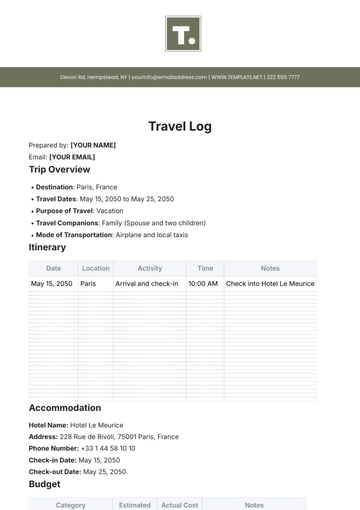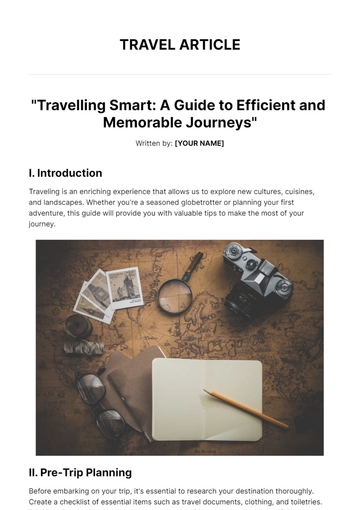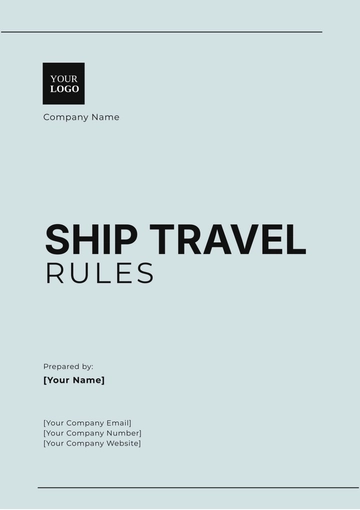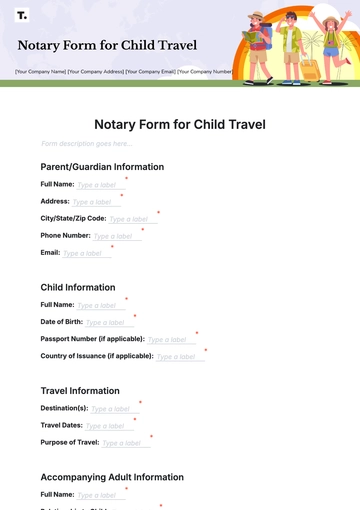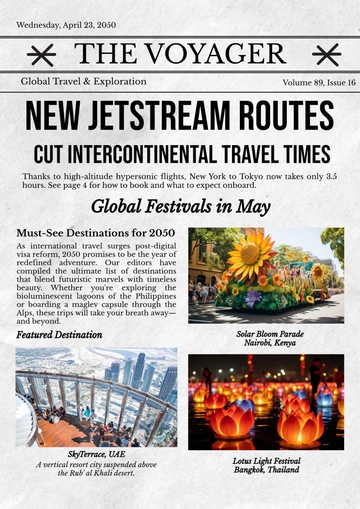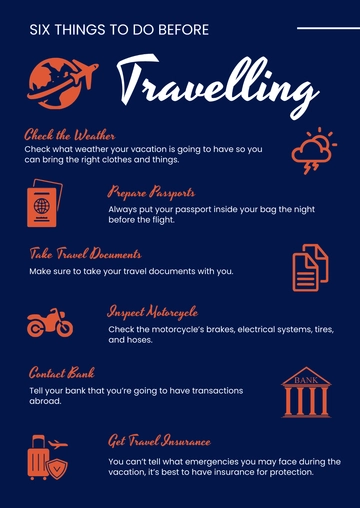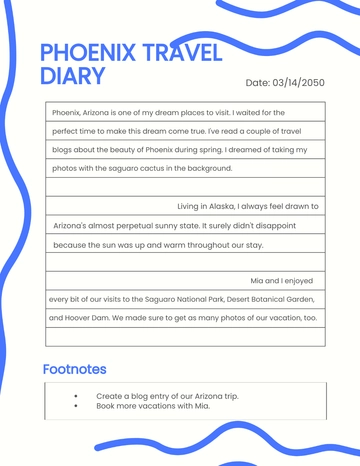Free Car Rental Marketing Strategy

I. Introduction
Marketing is the backbone of [Your Company Name]'s success in the competitive car rental industry. A well-defined marketing strategy helps us attract new customers, retain existing ones, and differentiate our brand in the marketplace. This comprehensive strategy outlines the steps we will take to achieve our marketing goals, drive business growth, and maintain a loyal customer base.
This document detail the various components of our marketing strategy, including market research, branding, digital marketing, customer engagement, and performance monitoring. Each section includes actionable steps, expected outcomes, and the tools we will use to measure success.
By implementing this strategy, [Your Company Name] aims to enhance its market presence, improve customer satisfaction, and achieve sustainable growth. Our commitment to excellence in marketing will ensure that we continue to meet and exceed customer expectations.
II. Market Research
The following table outlines key steps for conducting market research:
No. | Step | Description |
|---|---|---|
1 | Define Objectives | Establish clear objectives for the market research. |
2 | Identify Target Market | Determine the demographics and characteristics of the target market. |
3 | Competitive Analysis | Analyze competitors to understand their strengths and weaknesses. |
4 | Data Collection | Gather data using surveys, focus groups, and industry reports. |
5 | Data Analysis | Analyze collected data to identify trends and insights. |
A. Define Objectives
Clear Goals: Establish clear objectives for the market research. Clear goals ensure that the research is focused and relevant.
Measurable Outcomes: Define measurable outcomes to track the success of the research. Measurable outcomes provide benchmarks for evaluation.
Stakeholder Alignment: Ensure that all stakeholders agree on the research objectives. Alignment prevents misunderstandings and ensures support.
Resource Allocation: Allocate resources effectively to meet research objectives. Proper allocation ensures that the research is thorough and efficient.
Timeline Establishment: Set a timeline for completing the market research. Timelines ensure that the research is conducted promptly.
B. Identify Target Market
Demographic Analysis: Analyze demographic data to understand the target market's characteristics. Demographic analysis helps tailor marketing efforts.
Psychographic Profiling: Develop psychographic profiles to understand the target market's behaviors and preferences. Psychographic profiling enhances customer insights.
Segmentation: Segment the market based on key characteristics. Segmentation allows for more personalized marketing strategies.
Needs Assessment: Conduct a needs assessment to identify the target market's requirements. Understanding needs ensures that services meet customer expectations.
Market Size Estimation: Estimate the size of the target market. Market size estimation helps in planning marketing efforts and resource allocation.
C. Competitive Analysis
Identify Competitors: Identify key competitors in the market. Knowing competitors helps in understanding the competitive landscape.
Strengths and Weaknesses: Analyze competitors' strengths and weaknesses. This analysis helps identify opportunities and threats.
Market Positioning: Understand competitors' market positioning. Positioning insights help in differentiating our brand.
Customer Feedback: Gather customer feedback on competitors. Customer feedback provides insights into competitors' performance.
Benchmarking: Benchmark against competitors to identify areas for improvement. Benchmarking helps set performance standards.
D. Data Collection
Surveys: Conduct surveys to gather customer opinions and preferences. Surveys provide direct insights into customer needs.
Focus Groups: Use focus groups to gain deeper insights into customer behaviors. Focus groups facilitate in-depth discussions.
Industry Reports: Utilize industry reports to understand market trends. Reports provide comprehensive market data.
Social Media Monitoring: Monitor social media for customer feedback and trends. Social media offers real-time insights.
Sales Data: Analyze sales data to identify purchasing patterns. Sales data reveals customer behaviors and preferences.
E. Data Analysis
Trend Identification: Identify trends from the collected data. Trends provide insights into market dynamics.
Gap Analysis: Perform gap analysis to identify unmet customer needs. Gap analysis helps in developing new services.
Customer Segmentation: Segment customers based on data insights. Segmentation allows for targeted marketing efforts.
SWOT Analysis: Conduct SWOT analysis to evaluate strengths, weaknesses, opportunities, and threats. SWOT analysis informs strategic decisions.
Actionable Insights: Derive actionable insights from the data. Insights guide marketing strategies and actions.
Market research is essential for understanding the target market and the competitive landscape. By defining clear objectives, identifying the target market, analyzing competitors, collecting relevant data, and deriving actionable insights, [Your Company Name] can develop effective marketing strategies. These strategies will help us attract and retain customers, improve service offerings, and achieve business growth.
III. Branding
The following table outlines key steps for developing and maintaining our brand:
No. | Step | Description |
|---|---|---|
1 | Brand Identity | Define the brand identity and core values. |
2 | Brand Positioning | Establish the brand's market positioning. |
3 | Visual Identity | Create a consistent visual identity across all platforms. |
4 | Brand Messaging | Develop clear and consistent brand messaging. |
5 | Brand Experience | Ensure a positive and consistent brand experience. |
A. Brand Identity
Core Values: Define the core values that represent the brand. Core values guide the company's actions and decisions.
Mission Statement: Develop a mission statement that reflects the brand's purpose. A clear mission statement communicates the brand's goals.
Vision Statement: Create a vision statement that outlines the brand's long-term aspirations. The vision statement provides direction for future growth.
Unique Selling Proposition (USP): Identify the brand's USP. The USP differentiates the brand from competitors.
Brand Personality: Define the brand's personality traits. Personality traits shape the brand's image and customer perception.
B. Brand Positioning
Target Audience: Clearly define the target audience for the brand. Understanding the audience helps in crafting effective positioning.
Competitive Advantage: Highlight the brand's competitive advantage. Competitive advantage emphasizes what makes the brand unique.
Positioning Statement: Develop a positioning statement that captures the brand's essence. The positioning statement communicates the brand's value proposition.
Market Niche: Identify the market niche that the brand will occupy. A well-defined niche helps in focusing marketing efforts.
Brand Associations: Build positive associations with the brand. Positive associations enhance brand reputation.
C. Visual Identity
Logo Design: Create a memorable and impactful logo. The logo is the visual representation of the brand.
Color Palette: Develop a color palette that reflects the brand's personality. Colors play a crucial role in brand recognition.
Typography: Choose typography that aligns with the brand's identity. Consistent typography ensures a cohesive brand image.
Imagery: Use imagery that supports the brand's message. Imagery enhances visual appeal and brand storytelling.
Brand Guidelines: Develop brand guidelines to ensure consistency. Guidelines provide rules for using visual elements.
D. Brand Messaging
Tagline: Create a compelling tagline that captures the brand's essence. A memorable tagline reinforces the brand's message.
Tone of Voice: Define the brand's tone of voice. Consistent tone ensures clear and effective communication.
Key Messages: Develop key messages that convey the brand's value. Key messages guide all brand communications.
Storytelling: Use storytelling to connect with customers. Stories make the brand relatable and memorable.
Content Strategy: Develop a content strategy to support brand messaging. Consistent content reinforces the brand's identity.
E. Brand Experience
Customer Touchpoints: Ensure consistency across all customer touchpoints. Consistency enhances the overall brand experience.
Customer Service: Provide excellent customer service. Positive interactions build brand loyalty.
User Experience (UX): Focus on delivering a seamless UX. A positive UX improves customer satisfaction.
Feedback Integration: Use customer feedback to improve the brand experience. Feedback helps in addressing customer needs.
Community Engagement: Engage with the community to build brand loyalty. Community involvement strengthens brand connections.
Effective branding is crucial for establishing a strong market presence. By defining the brand identity, positioning it effectively, creating a consistent visual identity, developing clear messaging, and ensuring a positive brand experience, [Your Company Name] can build a powerful brand. This brand will attract customers, foster loyalty, and drive business growth.
IV. Digital Marketing
The following table outlines key steps for implementing a digital marketing strategy:
No. | Step | Description |
|---|---|---|
1 | Website Optimization | Ensure the website is user-friendly and optimized for search engines. |
2 | Social Media Marketing | Leverage social media platforms to reach and engage with the target audience. |
3 | Email Marketing | Develop targeted email campaigns to nurture leads and retain customers. |
4 | Content Marketing | Create valuable content to attract and engage the audience. |
5 | Paid Advertising | Use paid advertising to boost visibility and drive traffic. |
A. Website Optimization
User Experience (UX): Ensure the website provides an excellent UX. A positive UX keeps visitors engaged and encourages conversions.
Search Engine Optimization (SEO): Optimize the website for search engines. SEO improves visibility and drives organic traffic.
Mobile Responsiveness: Ensure the website is mobile-responsive. Mobile responsiveness caters to the growing number of mobile users.
Fast Loading Times: Optimize the website for fast loading times. Fast loading times improve user satisfaction and reduce bounce rates.
Clear Call-to-Actions (CTAs): Use clear CTAs to guide visitors. Effective CTAs encourage desired actions.
B. Social Media Marketing
Platform Selection: Choose the right social media platforms for the target audience. Platform selection ensures effective reach.
Content Strategy: Develop a content strategy tailored to each platform. Tailored content engages the audience and builds brand awareness.
Engagement: Actively engage with followers on social media. Engagement builds relationships and fosters loyalty.
Advertising: Use social media advertising to reach a broader audience. Advertising increases visibility and drives traffic.
Analytics: Monitor social media analytics to track performance. Analytics provide insights into what works and what needs improvement.
C. Email Marketing
Targeted Campaigns: Develop targeted email campaigns for different customer segments. Targeted campaigns ensure relevant messaging.
Personalization: Personalize emails to enhance engagement. Personalization makes customers feel valued.
Automated Workflows: Use automated workflows to nurture leads. Automation ensures timely and relevant communication.
A/B Testing: Conduct A/B testing to optimize email performance. Testing helps identify the most effective strategies.
Metrics Tracking: Track key email marketing metrics. Metrics provide insights into campaign effectiveness.
D. Content Marketing
Blogging: Regularly publish blog posts on relevant topics. Blogging drives traffic and establishes authority.
Video Content: Create video content to engage the audience. Videos are highly engaging and shareable.
Infographics: Use infographics to present information visually. Infographics are easy to understand and share.
Ebooks and Whitepapers: Develop ebooks and whitepapers to provide in-depth information. These resources generate leads and build credibility.
User-Generated Content: Encourage user-generated content to build community. User-generated content fosters engagement and trust.
E. Paid Advertising
PPC Campaigns: Run pay-per-click (PPC) campaigns to drive traffic. PPC campaigns provide immediate visibility.
Display Ads: Use display ads to reach a wider audience. Display ads increase brand awareness.
Retargeting: Implement retargeting campaigns to re-engage visitors. Retargeting keeps the brand top-of-mind.
Social Media Ads: Use social media ads to reach and engage the target audience. Social media ads are highly effective.
Budget Management: Manage the advertising budget to maximize ROI. Effective budget management ensures cost-efficiency.
Digital marketing is a powerful tool for reaching and engaging with customers. By optimizing the website, leveraging social media, developing targeted email campaigns, creating valuable content, and using paid advertising, [Your Company Name] can drive traffic, generate leads, and boost conversions. This digital marketing strategy will help us achieve our marketing goals and grow our business.
V. Customer Engagement
The following table outlines key steps for engaging customers:
No. | Step | Description |
|---|---|---|
1 | Loyalty Programs | Implement loyalty programs to reward repeat customers. |
2 | Customer Feedback | Collect and act on customer feedback to improve services. |
3 | Personalized Communication | Use personalized communication to enhance customer relationships. |
4 | Events and Promotions | Organize events and promotions to engage customers. |
5 | Social Media Interaction | Actively interact with customers on social media platforms. |
A. Loyalty Programs
Program Design: Design a loyalty program that rewards repeat customers. A well-designed program encourages customer retention.
Rewards Structure: Create a rewards structure that provides value. Valuable rewards motivate customers to participate.
Promotion: Promote the loyalty program across all channels. Promotion increases awareness and participation.
Enrollment Process: Simplify the enrollment process for customers. A simple process ensures high participation rates.
Ongoing Evaluation: Continuously evaluate and improve the loyalty program. Regular evaluation ensures the program remains effective.
B. Customer Feedback
Feedback Channels: Provide multiple channels for customers to give feedback. Multiple channels ensure accessibility.
Surveys: Use surveys to gather detailed feedback. Surveys provide structured insights into customer opinions.
Reviews: Encourage customers to leave reviews. Reviews provide valuable insights and enhance credibility.
Follow-Up: Follow up on feedback to show customers their opinions matter. Follow-up builds trust and loyalty.
Improvement Actions: Use feedback to make continuous improvements. Continuous improvement enhances customer satisfaction.
C. Personalized Communication
Customer Data: Use customer data to personalize communication. Personalized communication is more relevant and engaging.
Segmentation: Segment customers based on their preferences and behaviors. Segmentation allows for targeted messaging.
Tailored Messages: Create tailored messages for different customer segments. Tailored messages resonate better with recipients.
Automated Messaging: Use automated messaging to ensure timely communication. Automation ensures consistency.
Interactive Content: Use interactive content to engage customers. Interactive content is more engaging and memorable.
D. Events and Promotions
Event Planning: Plan events that appeal to the target audience. Well-planned events attract and engage customers.
Promotional Offers: Create promotional offers that provide value. Valuable offers encourage participation.
Marketing Campaigns: Develop marketing campaigns to promote events and promotions. Effective campaigns increase awareness.
Customer Involvement: Involve customers in event planning and execution. Customer involvement enhances engagement.
Post-Event Follow-Up: Follow up with customers after events. Follow-up maintains engagement and builds relationships.
E. Social Media Interaction
Active Presence: Maintain an active presence on social media. Active presence ensures ongoing engagement.
Content Sharing: Share relevant and interesting content regularly. Content sharing keeps customers informed and engaged.
Customer Interaction: Interact with customers through comments and messages. Interaction builds relationships and loyalty.
User-Generated Content: Encourage customers to create and share content. User-generated content enhances engagement.
Contests and Giveaways: Organize contests and giveaways to boost engagement. Contests and giveaways attract and engage customers.
Engaging with customers is crucial for building strong relationships and fostering loyalty. By implementing loyalty programs, collecting and acting on feedback, using personalized communication, organizing events and promotions, and interacting on social media, [Your Company Name] can enhance customer engagement. These efforts will help us retain customers, attract new ones, and drive business growth.
VI. Performance Monitoring
The following table outlines key steps for monitoring marketing performance:
No. | Step | Description |
|---|---|---|
1 | Key Metrics | Identify key metrics to track marketing performance. |
2 | Data Collection | Collect data regularly to measure performance. |
3 | Analysis Tools | Use analysis tools to interpret data. |
4 | Regular Reporting | Create regular reports to share insights. |
5 | Continuous Improvement | Use findings to improve marketing strategies. |
A. Key Metrics
Sales Metrics: Track sales metrics to measure revenue growth. Sales metrics provide direct insights into marketing effectiveness.
Customer Acquisition Cost (CAC): Monitor CAC to assess the cost-effectiveness of marketing efforts. Lower CAC indicates more efficient marketing.
Customer Lifetime Value (CLV): Calculate CLV to understand the long-term value of customers. Higher CLV suggests better customer retention.
Conversion Rates: Track conversion rates to measure the effectiveness of marketing campaigns. Higher conversion rates indicate successful campaigns.
Engagement Metrics: Monitor engagement metrics to assess customer interaction. High engagement levels indicate effective customer engagement.
B. Data Collection
Website Analytics: Use website analytics tools to gather data on website performance. Analytics provide insights into visitor behavior.
Social Media Analytics: Collect data from social media platforms. Social media analytics measure the effectiveness of social media marketing.
Email Marketing Analytics: Track email marketing performance. Email analytics provide insights into campaign effectiveness.
Customer Surveys: Use surveys to gather feedback on marketing efforts. Surveys provide direct insights from customers.
Sales Data: Analyze sales data to measure the impact of marketing on revenue. Sales data provides concrete performance metrics.
C. Analysis Tools
Google Analytics: Use Google Analytics to track website performance. Google Analytics provides comprehensive data on website traffic and behavior.
Social Media Insights: Utilize insights tools provided by social media platforms. These tools offer detailed data on engagement and reach.
CRM Systems: Use CRM systems to analyze customer data. CRM analysis helps in understanding customer behavior and preferences.
Email Marketing Tools: Leverage email marketing tools to track campaign performance. These tools provide detailed metrics on email engagement.
Data Visualization Tools: Use data visualization tools to present data clearly. Visualization aids in interpreting complex data.
D. Regular Reporting
Monthly Reports: Create monthly reports to track progress. Regular reporting ensures continuous monitoring.
Quarterly Reviews: Conduct quarterly reviews to evaluate overall performance. Quarterly reviews provide a broader perspective.
Performance Dashboards: Develop dashboards for real-time performance tracking. Dashboards offer quick insights into key metrics.
Stakeholder Reports: Share reports with stakeholders regularly. Regular updates keep stakeholders informed and aligned.
Actionable Insights: Include actionable insights in reports. Insights guide future marketing strategies and actions.
E. Continuous Improvement
Identify Weaknesses: Use data to identify weaknesses in marketing strategies. Identifying weaknesses helps in addressing gaps.
Implement Changes: Make necessary changes based on findings. Continuous improvement ensures that marketing efforts remain effective.
Test New Strategies: Test new strategies to find better approaches. Testing helps in discovering more effective marketing methods.
Monitor Results: Continuously monitor results to measure the impact of changes. Ongoing monitoring ensures continuous improvement.
Adapt to Trends: Adapt marketing strategies to emerging trends. Staying current with trends ensures relevance.
Performance monitoring is essential for evaluating the effectiveness of marketing efforts. By identifying key metrics, collecting data, using analysis tools, creating regular reports, and continuously improving strategies, [Your Company Name] can ensure that its marketing efforts are effective and aligned with business goals. Monitoring performance will help us make informed decisions, optimize marketing strategies, and achieve better results.
VII. Budget Allocation
The following table outlines key steps for allocating the marketing budget:
No. | Step | Description |
|---|---|---|
1 | Define Budget Goals | Establish clear goals for the marketing budget. |
2 | Identify Priorities | Identify marketing priorities to allocate funds effectively. |
3 | Allocate Resources | Distribute resources across different marketing channels. |
4 | Monitor Expenditures | Regularly monitor marketing expenditures. |
5 | Adjust Budget | Adjust the budget based on performance and changing needs. |
A. Define Budget Goals
Clear Objectives: Establish clear objectives for the marketing budget. Clear objectives guide budget allocation decisions.
Measurable Targets: Set measurable targets to track budget effectiveness. Measurable targets provide benchmarks for evaluation.
Stakeholder Alignment: Ensure that all stakeholders agree on budget goals. Alignment ensures support and understanding.
Resource Allocation: Allocate resources based on budget goals. Proper allocation ensures effective use of funds.
Timeline Establishment: Set a timeline for budget implementation. Timelines ensure that funds are used efficiently.
B. Identify Priorities
High-Impact Areas: Identify high-impact marketing areas. Prioritizing these areas maximizes the return on investment.
Customer Acquisition: Allocate funds to customer acquisition strategies. Customer acquisition drives business growth.
Customer Retention: Invest in customer retention efforts. Retaining customers is cost-effective and fosters loyalty.
Brand Awareness: Fund brand awareness initiatives. Building brand awareness attracts new customers.
Innovation and Experimentation: Allocate a portion of the budget for innovation and experimentation. Experimentation helps discover new opportunities.
C. Allocate Resources
Channel Distribution: Distribute resources across different marketing channels. Balanced distribution ensures comprehensive coverage.
Digital Marketing: Invest in digital marketing efforts. Digital marketing is cost-effective and has a broad reach.
Traditional Marketing: Allocate funds to traditional marketing methods. Traditional marketing remains effective for certain audiences.
Content Creation: Invest in content creation to engage the audience. Quality content drives traffic and builds trust.
Customer Engagement: Fund customer engagement initiatives. Engaging customers fosters loyalty and retention.
D. Monitor Expenditures
Tracking Tools: Use tracking tools to monitor expenditures. Tracking ensures that spending is aligned with budget goals.
Regular Reviews: Conduct regular reviews of marketing expenditures. Regular reviews help identify overspending or underspending.
Expense Reports: Create detailed expense reports for transparency. Expense reports provide insights into spending patterns.
Adjustments: Make necessary adjustments based on spending reviews. Adjustments ensure that the budget remains effective.
Stakeholder Updates: Regularly update stakeholders on budget status. Updates keep stakeholders informed and involved.
E. Adjust Budget
Performance Analysis: Analyze marketing performance to identify areas for budget adjustments. Performance analysis guides reallocation decisions.
Market Changes: Adapt the budget to changing market conditions. Flexibility ensures that marketing efforts remain relevant.
New Opportunities: Allocate funds to new opportunities as they arise. Seizing new opportunities drives growth.
Efficiency Improvements: Reallocate funds to more efficient marketing methods. Efficiency improvements maximize the return on investment.
Continuous Monitoring: Continuously monitor budget performance. Ongoing monitoring ensures effective use of funds.
Budget allocation is critical for maximizing the effectiveness of marketing efforts. By defining budget goals, identifying priorities, allocating resources, monitoring expenditures, and adjusting the budget, [Your Company Name] can ensure that its marketing budget is used efficiently and effectively. Proper budget management will help us achieve our marketing goals and drive business growth.
VIII. Customer Relationship Management (CRM)
The following table outlines key steps for implementing a CRM strategy:
No. | Step | Description |
|---|---|---|
1 | CRM System Selection | Choose a CRM system that meets the company's needs. |
2 | Data Integration | Integrate customer data into the CRM system. |
3 | Staff Training | Train staff on how to use the CRM system effectively. |
4 | Customer Segmentation | Segment customers based on data insights. |
5 | Performance Monitoring | Monitor CRM performance to ensure effectiveness. |
A. CRM System Selection
Needs Assessment: Conduct a needs assessment to determine CRM requirements. Understanding needs ensures that the chosen system meets company requirements.
Vendor Comparison: Compare different CRM vendors. Comparison helps in selecting the most suitable system.
Feature Evaluation: Evaluate the features of different CRM systems. Feature evaluation ensures that the system has the necessary capabilities.
Scalability: Choose a CRM system that can scale with the business. Scalability ensures long-term usability.
Budget Consideration: Consider the budget for the CRM system. Budget consideration ensures cost-effectiveness.
B. Data Integration
Data Migration Plan: Develop a data migration plan. A detailed plan ensures smooth data integration.
Data Cleansing: Cleanse data before integration. Data cleansing ensures accuracy and reliability.
System Integration: Integrate the CRM system with other business systems. Integration ensures seamless data flow.
Data Security: Ensure data security during integration. Security measures protect sensitive customer information.
Testing: Test the CRM system after integration. Testing ensures that the system functions correctly.
C. Staff Training
Training Program: Develop a comprehensive training program. Effective training ensures that staff can use the system efficiently.
User Guides: Provide user guides and manuals. User guides serve as reference materials for staff.
Hands-On Training: Conduct hands-on training sessions. Practical training enhances understanding and proficiency.
Ongoing Support: Offer ongoing support to staff. Continuous support ensures that staff can resolve any issues.
Feedback Collection: Collect feedback from staff on training effectiveness. Feedback helps improve the training program.
D. Customer Segmentation
Data Analysis: Use CRM data to analyze customer behavior. Data analysis provides insights into customer preferences and needs.
Segmentation Criteria: Define criteria for customer segmentation. Clear criteria ensure accurate and effective segmentation.
Segment Profiles: Create profiles for different customer segments. Profiles provide detailed insights into each segment.
Targeted Strategies: Develop targeted marketing strategies for each segment. Targeted strategies ensure relevance and effectiveness.
Regular Updates: Regularly update customer segments based on new data. Regular updates ensure that segmentation remains accurate.
E. Performance Monitoring
Key Metrics: Identify key metrics to track CRM performance. Key metrics provide benchmarks for evaluation.
Regular Reviews: Conduct regular reviews of CRM performance. Regular reviews help identify areas for improvement.
User Feedback: Collect feedback from CRM users. User feedback provides insights into system usability and effectiveness.
Continuous Improvement: Continuously improve the CRM system based on feedback and performance data. Continuous improvement ensures long-term effectiveness.
Stakeholder Reports: Share performance reports with stakeholders. Reports keep stakeholders informed and aligned.
Implementing a CRM strategy is essential for managing customer relationships effectively. By selecting the right CRM system, integrating customer data, training staff, segmenting customers, and monitoring performance, [Your Company Name] can enhance its customer relationship management efforts. A robust CRM strategy will help us better understand our customers, improve service delivery, and foster long-term loyalty.
IX. Conclusion
[Your Company Name]'s car rental marketing strategy is designed to drive business growth and enhance customer satisfaction. By conducting thorough market research, developing a strong brand, leveraging digital marketing, engaging with customers, monitoring performance, allocating budgets effectively, and implementing a robust CRM strategy, we can achieve our marketing goals.
The strategies outlined in this document provide a comprehensive framework for our marketing efforts. By following these strategies, we will be well-equipped to navigate the competitive car rental market, attract and retain customers, and ensure the long-term success of [Your Company Name].
- 100% Customizable, free editor
- Access 1 Million+ Templates, photo’s & graphics
- Download or share as a template
- Click and replace photos, graphics, text, backgrounds
- Resize, crop, AI write & more
- Access advanced editor
Develop and implement effective marketing strategies with the Car Rental Marketing Strategy Template! Available on Template.net, this template is editable, allowing you to tailor it to specific marketing goals. The customizable format ensures flexibility. The AI Editor Tool assists in creating a detailed and actionable marketing strategy, driving business growth!

